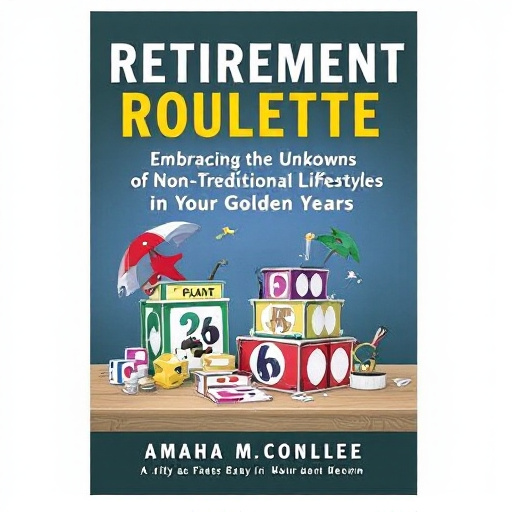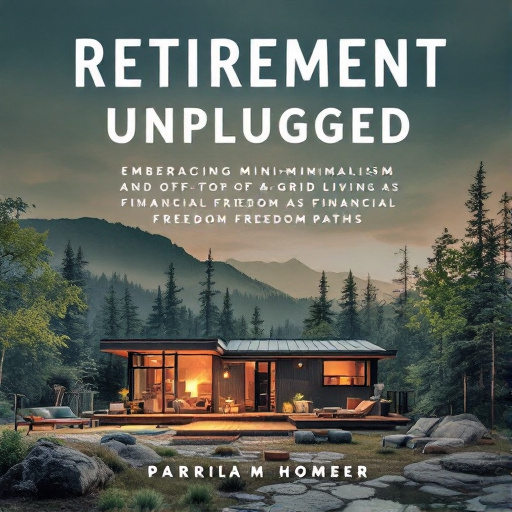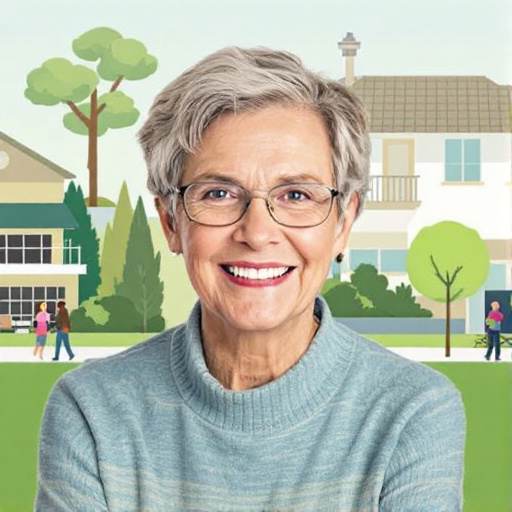Featured Articles
- "Beyond Savings: How Gardening and Hobbies Can Transform Your Retirement Plans"
- Reimagining Retirement: How Virtual Reality Could Transform Senior Living and Financial Independence
- "Rethinking Retirement: How Eco-Friendly Living Is Shaping Future Financial Planning"
- Retire in Style: Exploring the Rise of Sustainable Living Communities for Seniors
- "Retirement Reimagined: How Eco-Conscious Living is Shaping Future Financial Landscapes"
Retire in Style: Exploring the Rise of Sustainable Living Communities for Seniors
Retire in Style: Exploring the Rise of Sustainable Living Communities for Seniors
Retirement is no longer about lounging on the beach or playing golf; it's increasingly about living in environmentally sustainable communities that promote wellness, connection, and longevity. This article explores the rise of sustainable living communities for seniors, showcasing how they provide a stylish, eco-friendly retirement option that enhances quality of life.
The Shift Towards Sustainable Living
As our planet copes with the repercussions of climate change, people of all ages are seeking ways to lessen their environmental impact. The senior population is no different, especially as many opt for greener living arrangements that reflect their values. Did you know that, according to the United Nations, the number of people aged 60 and older will rise to 2.1 billion by 2050? This demographic shift is prompting a demand for innovative living solutions.
Growing Older, Growing Green
Picture this: You're sipping organic coffee on your sunlit porch, surrounded by lush gardens and the cheerful chatter of neighbors. But this isn't a dream; it’s the reality for many seniors living in sustainable communities. These communities often feature eco-friendly measures like solar energy, community gardens, and rainwater harvesting, making them attractive for retirees looking to live more sustainably.
Case Study: EcoVillage in Ithaca, New York
Let’s dive into a tangible example—EcoVillage in Ithaca, New York. Established in 1991, it uniquely combines intentional community with sustainable living practices. Today, over 70 households flourish there, showcasing an innovative blend of aging-in-place opportunities and community engagement (EcoVillage Ithaca).
Through its commitment to green living, EcoVillage has dramatically reduced its carbon footprint while fostering a sense of belonging among its residents. The average age of residents is around 65, demonstrating that retirees are keen on engaging with others while nurturing a healthier planet.
Health Benefits Honed by Sustainability
Living in a green community doesn't just benefit Mother Earth; it significantly boosts human health, too. Research shows that seniors who engage in community-oriented lifestyles report lower rates of loneliness and depression. The Environmental Protection Agency backs this up, highlighting that sustainable living can contribute to reducing health risks by minimizing exposure to pollutants (EPA - Healthy Communities).
Talking Turkey: The Financial Perspective
Now, let’s get practical. You might be asking yourself, “Isn’t eco-friendly living pricier?” Surprisingly, sustainable living can save money in the long run through reduced utility bills and maintenance costs. A study by the American Council for an Energy-Efficient Economy showed that homes equipped with energy-efficient systems can save up to 30% on energy costs each year (ACEEE).
Making Sustainability Accessible
For those worried about renovation costs, many communities offer shared resources, making it affordable to incorporate green features without breaking the bank. Pooling resources not only fosters a sense of camaraderie but aligns with the principles of sustainability itself. So, while Sarah from next door might have her garden teeming with heirloom tomatoes, you could benefit from her bountiful harvest without ever lifting a finger.
Communities that Fit Your Lifestyle
But what if you’re a little hesitant about moving? Rest assured, many senior sustainable living communities cater to various interests, from urban settings to rural retreats. Some focus on active lifestyles, with amenities like walking trails and fitness classes, while others are more relaxed, prioritizing meditation gardens and quiet spaces.
A Day in the Life: Smith’s Green Haven
Imagine starting your day at Smith’s Green Haven, a community dedicated to active, eco-friendly living.
6:30 AM - Wake up to the sounds of birds chirping.
7:00 AM - Join a yoga class on the rooftop terrace.
9:00 AM - Share breakfast with friends featuring homegrown fruits and vegetables.
11:00 AM - Tend to the community garden to grow your own greens while chatting with fellow green thumbs.
This vibrant lifestyle fosters human connections and overall satisfaction, proving that retirement doesn't mean slowing down—it can be a time of exploration and engagement.
Breaking Down Barriers: Inclusivity in Sustainable Living
One potential roadblock to the rise of sustainable senior communities is the perception that they cater to affluent individuals. However, many organizations are working diligently to create inclusive, affordable options for seniors of all socioeconomic backgrounds. Initiatives like establishing cooperative housing models allow residents to share responsibilities and expenses, making sustainable living accessible to a more diverse group of seniors.
Statistics on Inclusion
In a 2022 survey by the Joint Center for Housing Studies, 61% of seniors expressed a desire for more affordable housing options that integrate community features. That statistic underscores a significant demand for adaptation among current housing markets, paving the way for the rise of sustainable living communities that are inclusive and diverse.
The Role of Technology in Sustainable Living
Who says we can't have our cake and eat it too? With the advent of smart home technologies, integrating sustainable living into seniors’ homes has never been easier. From energy-efficient appliances to smart thermostats that learn your habits, technology plays a critical role in reducing energy use while maintaining comfort.
According to a recent study by the National Institute on Aging, technology use among seniors has increased by 50% over the last decade, showing that age is not a barrier to embracing innovation and sustainability (NIA).
The Future is Green
If you’re feeling slightly overwhelmed by the idea of sustainable living, let me reassure you: it’s not only about major lifestyle changes. It's small, consistent choices that add up. Even as a senior, you can contribute—start by recycling or participating in community programs.
Getting Started on Your Journey
Interested? Making the leap into a sustainable living community is easier than it sounds. Start by researching local communities, visiting with family or friends, and participating in trial events to see if it's a fit. Websites offer virtual tours and testimonials from current residents, which can help demystify community living when exploring options.
Furthermore, don’t underestimate the power of social media! Facebook groups, Instagram pages, and even Reddit threads often feature discussions that can lead you to the perfect sustainable living community that ticks all your boxes.
Final Thoughts: A Sustainable Future Awaits You!
In conclusion, sustainable living communities for seniors are gaining traction as the ideal blend of environmental responsibility, community connection, and personal fulfillment. As we envision a future where aging aligns harmoniously with ecological sustainability, it's clear the best time to consider this shift is now.
Whether you're 16 or 70, the choices we make today will shape the planet for generations to come. So why not take the leap? Because retiring in style isn't merely about comfort—it's about creating a legacy you can be proud of!




